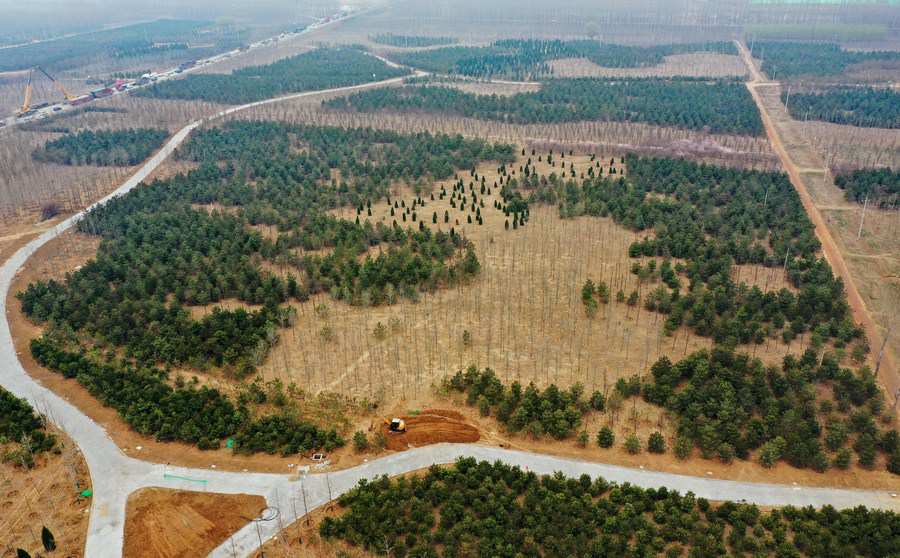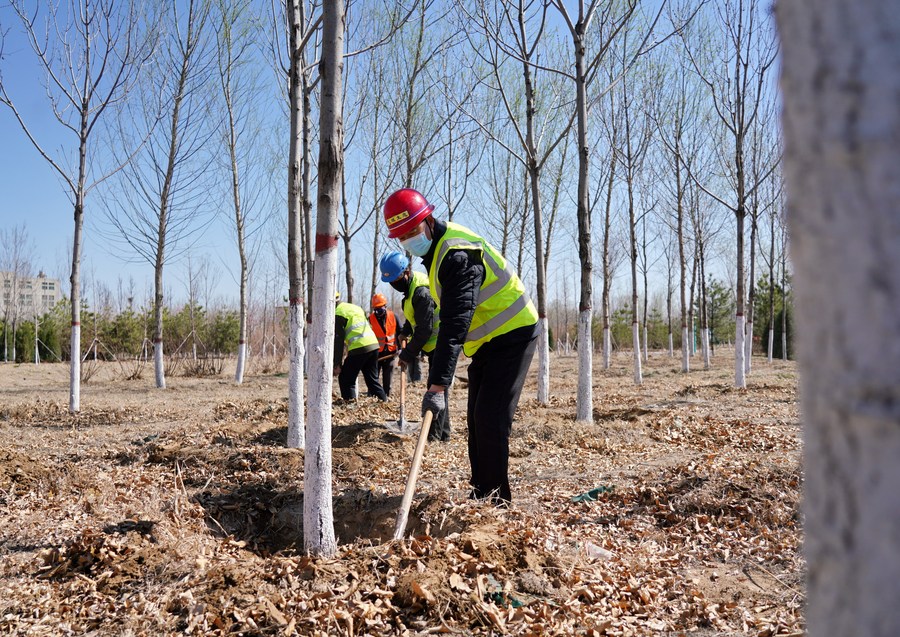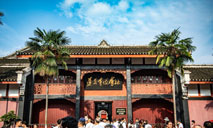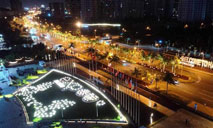The green ambition of Xiong'an New Area builders

Aerial photo taken on March 19, 2021 shows a forestation project in Xiong'an New Area, north China's Hebei Province. (Xinhua/Mu Yu)
SHIJIAZHUANG, May 12 (Xinhua) -- Zhao Jiancheng was delighted to find the saplings he planted in 2017 have now grown to trees of about three to four meters.
Zhao, 59, is from a village in Xiong'an New Area, some 100 km from Beijing, in north China's Hebei Province.
After China announced plans to establish Xiong'an New Area in 2017, the former migrant worker returned to his hometown to help with the construction of the new area. Later that year, he and his colleagues planted the first batch of trees there.
"I can almost name all 200 categories of trees growing here," said Zhao, adding that more birds have been spotted in the area due to the improved environment.
As of April this year, more than 20 million trees had been planted, covering 27,000 hectares of area.


Workers take care of trees of a forestation project in Xiong'an New Area, north China's Hebei Province, March 19, 2020. (Xinhua/Yang Shiyao)
With a planned area of 1,770 square km, Xiong'an is a new area of national significance that follows the Shenzhen Special Economic Zone and the Shanghai Pudong New Area. It aims to set an example for high-quality development in the new era.
Including Baiyangdian Lake, which has a total water surface of over 250 square km, 70 percent of the Xiong'an New Area will be covered by water or trees, according to the development plan.
Xiong'an will by 2035 be developed into a high-level modern city that is green, intelligent and livable, with relatively strong competitiveness and harmonious human-environment interaction.
Peng Xugeng, deputy general manager with the ecological construction company of the China Xiong'an Group (CXG), said some 600,000 fruit trees including peaches, pears and apples can provide abundant food and nectar resources for birds and other animals, with many other kinds of suitable trees available for them to nest on.
In Xiong'an, each newly-planted tree has its own QR code ID, which contains information like origin, crown diameter, height and the name of its grower and manager. All the information will be recorded and collected in a database, which could be helpful for the global research of trees and forests.
Huang Xuechen, 32, came to Xiong'an four years ago for the forestation project and now serves as a senior business executive of the ecological construction company of the CXG.
"I feel honored to witness the rise of the forest here," said Huang.
Huang is from Saihanba, the world's largest artificial forest in Hebei. In 2017, the Saihanba afforestation community scooped the UN Champions of the Earth Award for its outstanding contribution to the restoration of degraded landscapes.
"With green development prioritized, Xiong'an will become another example for ecological development following Saihanba," he said.
Photos
Related Stories
- Four years on, Xiong'an New Area construction at full throttle
- Intercity railway cuts travel time between Beijing, Xiong’an
- Intercity railway brings Beijing and Xiong'an closer
- How China's Xiong'an Railway Station was built
- Intercity railway section linking Beijing airport with Xiongan New Area to be put into operation
people.cn © People's Daily Online
Copyright © 2021 People's Daily Online. All Rights Reserved.










